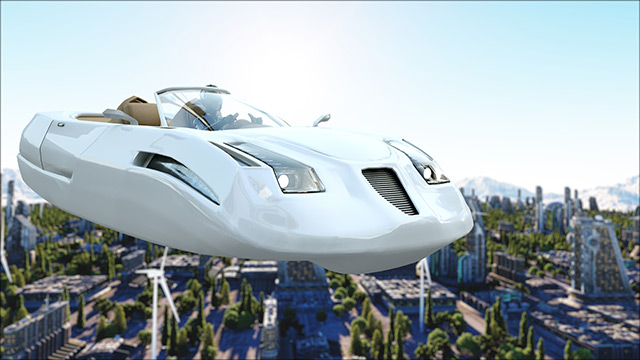 Parler
Parler Gab
Gab
Stavatti wants to develop affordable hover cars
Stavatti wants to develop affordable hover cars that use gravitational propulsion. Beskar said his company's goal is to create a vehicle that does not create a loud noise. "As a technology goal, Stavatti is very focused on a future in which we have these personal air vehicles that are using an advanced technology to take off and land vertically be it inertial propulsion, levitation or anti-gravity," Beskar said. He added that advanced propulsion is something that can be achieved and the Navy patents are very exciting because they point toward fusion cores like Lockheed Skunkworks' controlled nuclear fusion. Beskar mentioned that a long-range, high-speed bomber that can fly at Mach 8 needs a different propulsion system and that is where atomic or nuclear propulsion is needed. "It is our job to follow the lead and pursue that level of advanced technology and see where it gets us. This technology will lead to a world that is borderless," he said. The Stavatti CEO noted that having a personal aircraft that can take off and land vertically and allows you to travel at 200 to 300 miles an hour over long distances would enable a person to live and work differently. He added that this opens up life in the country where a person can have a minimum footprint that is not destroying the environment or upsetting the local community. (Related: Are futuristic flying cars really better for the environment?) For example, he said, a person that lives on an island in the middle of nowhere can still have better access to the world through a hover car. Beskar also talked about the collision avoidance technology, which would protect humans from being hurt in hover vehicles. He said it is a sensor technology in a vehicle that can fly more under a computer controlled state, but with manual backup. Watch the video below to know more about hover car technology. This video is from the DavidWilcock333 channel on Brighteon.com.More related stories:
The latest prototypes of flying cars do not require a pilot or piloting skills. New battery technology to take electric VTOL vehicles off the ground. 40-Seater FLYING BUS to start airlifting travelers in New York City by 2024. Sources include: Brighteon.com Stavatti.comFormer BMJ editor: Health research should be considered fraud until proven otherwise
By Mary Villareal // Share
WOKE SCIENCE: Nature Human Behavior journal says no science “offensive” to LGBTs is allowed
By Ethan Huff // Share
Nobel Prize-winning German biologist: Multiple genders are “nonsense” and “unscientific”
By News Editors // Share
FDA approves Omicron “booster” jab before midterms without a single human test
By Ethan Huff // Share
Governments continue to obscure COVID-19 vaccine data amid rising concerns over excess deaths
By patricklewis // Share
Tech giant Microsoft backs EXTINCTION with its support of carbon capture programs
By ramontomeydw // Share
Germany to resume arms exports to Israel despite repeated ceasefire violations
By isabelle // Share










